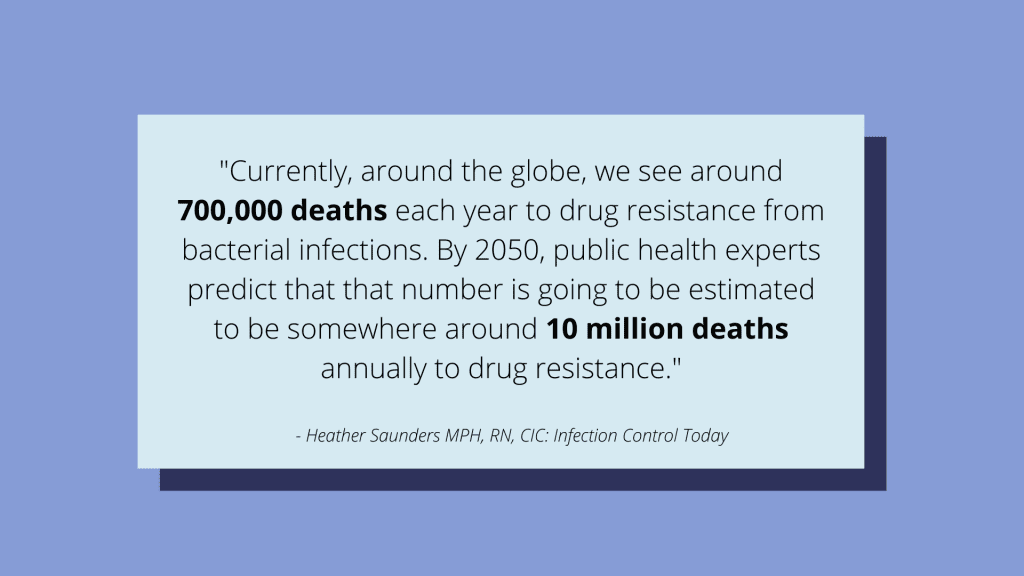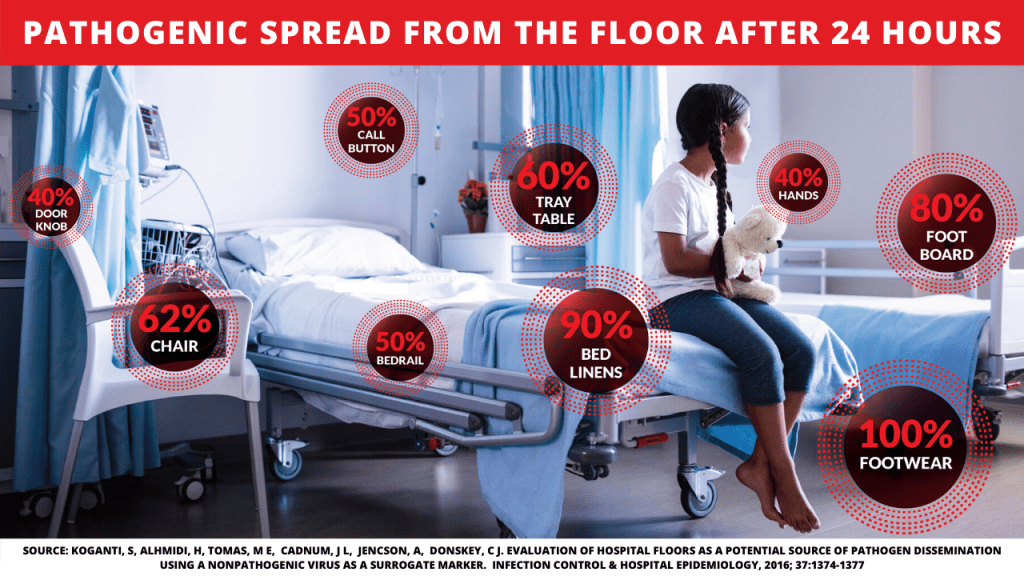Healthcare-Associated Infections: Protecting Yourself as a Patient

Healthcare‐associated infections (HAIs) are infections that patients get while receiving medical care for another condition.
The Facts:
• About 1 out of every 20 hospital patients will get an HAI in their lifetime and on any given day, about 1 in 31 hospital patients has a healthcare-associated infection.
• HAIs happen in array of healthcare settings – not just during hospital stays. Long-term care facilities, outpatient clinics and dialysis centers are other common sites of outbreaks.
• The most common types of HAIs are associated with central lines, catheters, ventilators, surgical sites that become infected and antibiotic use.
• Antibiotic-resistant bacteria and other drug-resistant germs are more common in healthcare settings than in the community.
• Taking antibiotics can cause Clostridioides difficile (C. diff) — a bacteria that causes life-threatening diarrhea that is spread easily from person to person. Know the symptoms of C. diff to spot infection early: Diarrhea, loose, watery stools for several days, fever, stomach tenderness, loss of appetite, nausea

“Currently, around the globe, we see around 700,000 deaths each year to drug resistance from bacterial infections. By 2050, public health experts predict that that number is going to be estimated to be somewhere around 10 million deaths annually to drug resistance.” — Heather Saunders MPH, RN, CIC – Infection Control Today
Questions to Ask Your Care Team:
1. Can you wash your hands in front of me? Ask nurses, doctors and techs to wash their hands in front of you. Remind your visitors to wash hands when they enter.
2. What does this facility do to protect patients from antibiotic-resistant infection? Drug-resistant microbes are on the rise. Every facility should have proactive infection prevention measures in addition to protocols during and after treatment.
3. How long will I be taking this antibiotic and what risks are associated with taking them? Ask your doctor which antibiotic you are taking and why, which kind of infection they are treating and how they know that you have that infection. You can also ask if there are any alternatives to taking antibiotics.
4. When can my catheter be removed? If you have a catheter inserted, ask your care team daily if the catheter can be removed. Catheter-associated Urinary Tract Infections are a common HAI. Among UTIs acquired in the hospital, approximately 75% are associated with a urinary catheter.
5. How can I prepare for surgery to reduce my risk of infection? If you are having surgery, ask your care team how they prevent infections and what steps you can take beforehand to reduce the risk of infection before and after surgery.
Other Steps You Can Take:
• Wash your hands thoroughly and often.
• Always take the full course of antibiotics and medicines, unless otherwise advised by your doctor.
• Tell your doctors if you have been hospitalized in another facility, have recently received health care outside of your home country, or have recently had an infection.
• Let your doctors check you for resistant germs if needed. Hospitals need to screen patients if they’re exposed, and this helps protect you and those around you.
• Allow staff to clean your room while you’re in the hospital, even when it feels inconvenient for you. Germs can contaminate equipment and other surfaces like bedrails and tables. Allowing them to clean and disinfect your room helps keep you safe by reducing your risk of developing an infection.

Pathogenic Spread from the Floor After 24 Hours: Door Knob: 40% | Hands: 40% | Call Button: 50% | Bedrail: 50% | Tray Table: 60% | Chair: 62% | Foot Board: 80% | Bed Linens: 90% | Footwear: 100
Patients and their care-givers should advocate for their own safety. Healthcare facilities have measures in place to keep you safe – but they are not perfect and sometimes do not properly address all vectors for transmission. Taking the initiative with the tips above can help you protect yourself, other patients and staff from HAIs.
Sources:
- CDC: HAI Data
- CDC: Protect yourself against HAIs
- CDC: Clostridioides difficile Infection
- CDC: HAIs and Patient Safety
- CDC: Catheter-associated Urinary Tract Infections (CAUTI)
- Infection Control Today: Gathering Storm: Future Without Antibiotics Is Coming at Us
- Evaluation of Hospital Floors as a Potential Source of Pathogen Dissemination – Koganti

